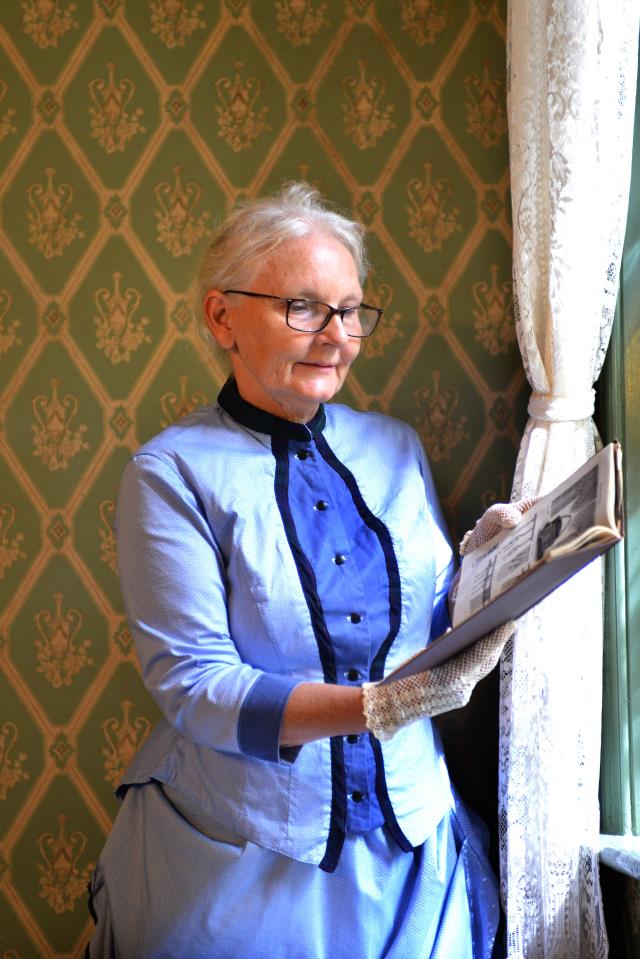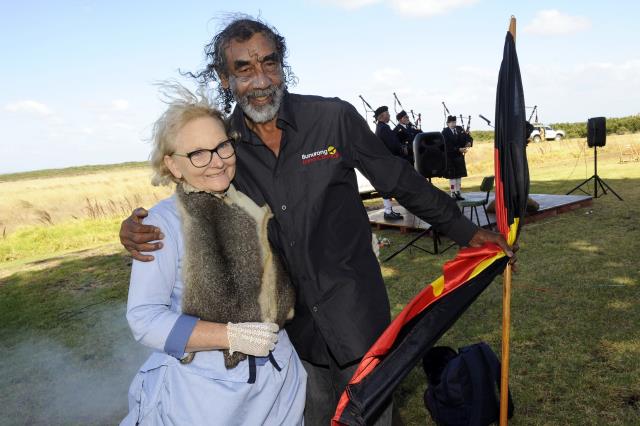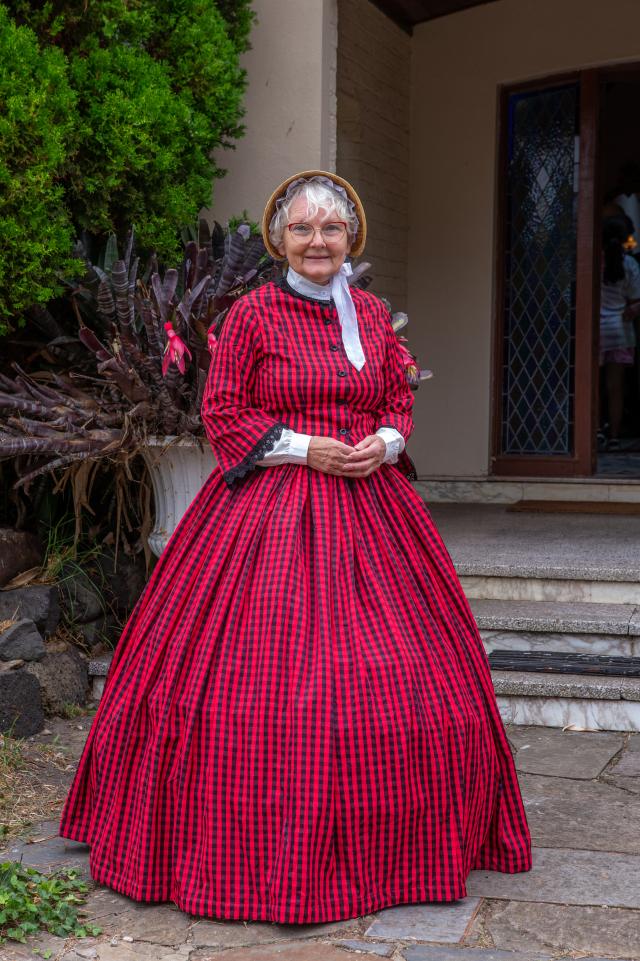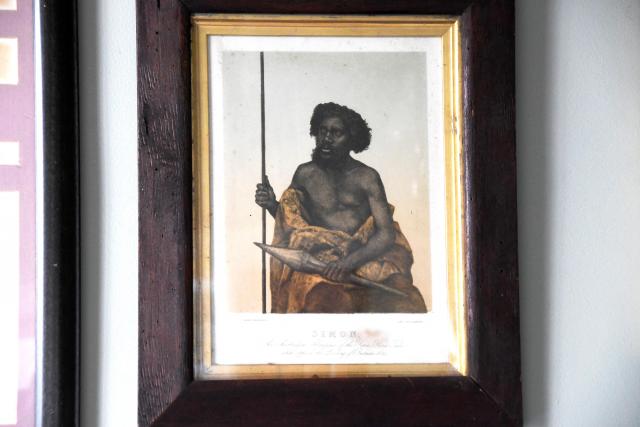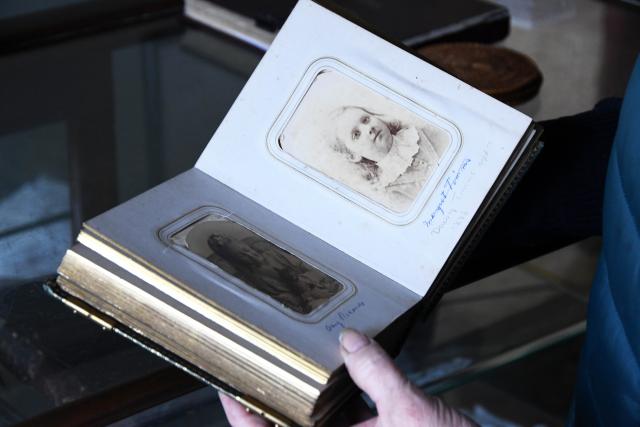Kooweerup’s Harewood House was completed in 1868 for pastoralist William Lyall on the clan lands of the Yallock Bulluk people. With original interior furnishings, visiting the homestead is like stepping into the past. Dr Pat Macwhirter is the caretaker of the property and holds a unique outlook on time. As an environmentalist and historian, Dr Macwhirter has the ability to look back into the past as well as forward into the future to assess the legacy individuals can leave on their communities. SHELBY BROOKS reports.
Each year on Harewood Heritage Day, Dr Pat Macwhirter dons a late 1800s style costume to celebrate the pioneers of the swamp district.
This year, it was original Harewood owner William Lyall’s sister, Margaret Lyall-Mickle, that Dr Pat brought to life.
“Annabella Lyall, William’s wife, was an awesome Victoria-era mum. She gave birth to ten children, including the first white child born in Tooradin,” Dr Pat said.
“She always dressed fashionably, played the piano well and taught her children to play. She shared currant cake with the local Boonwurrung women (they picked the currants out of the cake) and did an awesome job at entertaining. Her sponge cakes and the dances her family gave at Harewood were legendary.
“In short Annabella was everything that I’m not, hence I choose her sister-in-law, William Lyall’s sister Margaret Lyall-Mickle, who only had one daughter but wrote family memoirs, as my character.”
As Margaret Lyall-Mickle, Dr Pat was able to celebrate a lesser known individual from the past who still made an impact on history.
“It’s not just people in period costumes,” Dr Pat said of Heritage Day.
“It’s about going back to the characters and who were the awesome ancestors of that generation compared to what you see today and also thinking about who is going to be an awesome ancestor in 150 years’ time.”
Ahead of next year’s Heritage Day, Dr Pat will be uploading a list of 670 individuals who visited the estate between the 1850s and the early 1900s.
Those names were recorded in the diaries kept by the original owners of Harewood at the time and include the first Governor General of Australia the Earl of Hopetoun.
But Dr Pat thinks you don’t have to be “mover and shaker” to be celebrated.
“You’ve also got names of people who weren’t on the historical record; the bullock driver or the thistle cutter,” she said.
“All these individuals were awesome ancestors and an inspiration to anyone to become an awesome ancestor by leveraging your own special talents and making a unique and beautiful contribution to the world in the generation you happen to be born.
“People are encouraged to use this list as a point of departure to pick their own biological or inspirational ‘awesome ancestor’ to come along as on Harewood’s next Heritage Day which will be on Sunday 25 March 2023.”
By delving back into history, Dr Pat has the retrospect to see how people’s choices 150 years ago affect how we live today. In doing so, she can flip that to a prospective view as well.
“You have a lovely picture here at Harewood of people who are all now pushing up daisies but 150 years ago they were making decisions of what was going to happen in the landscape,” she said.
“It gives you this sense of what’s going to be our generation’s legacy in 150 years’ time.”
But Dr Pat wants people to remember to look back further than 150 years to the 60,000 years of indigenous history and culture on Australian land.
The recent pivot from the Scots on the Swamp Day to Harewood Heritage Day is reflective of that attitude.
“It allows for a broader celebration of pioneers beyond those of an Anglo-Saxon background,” Dr Pat said.
“There’s always been people who aren’t of Anglo-Celtic background in the history of the area.
“Scots heritage is a big part of the draining of the swamp and what has happened here at Harewood but we also have a really interesting indigenous history.“
Dr Pat’s research into Wurundjeri and Bunurong history lead her to complete a PhD on the topic.
“I started off writing it as a history of the house, but I started to discover the indigenous history that wasn’t really published at all you just realised how incredibly interesting it is- much better than all that Hollywood stuff,” she said.
“It ended up being a history of the world from the big bang to present day but using old material culture at Harewood to tell that story.”
Thinking of the legacy of the land into the future, Dr Pat is involved in the preservation of the endangered growling grass frog which calls the Westernport Bay area home.
It’s part of her mission to ’rewild’ Harewood and bring native flora and fauna back to the estate.
Dr Pat is also president of the Healesville Phillip Island Nature Link, an advocacy group partnering with government and non-government organisations, land owners, developers and concerned citizens to create a world class Nature Link connecting critical wildlife habitats from Healesville to Phillip Island.
“Biodiversity is something I’m particularly interested in,“ Dr Pat said.
“We look at things landscape wise and intergenerational.“
Dr Pat’s interest in nature and the environment ties in with her work as a bird veterinarian.
She knew from a young age she wanted to be a vet.
“It was really just a matter of how was I going to do it,” she said.
When she was getting her start, there were sexist attitudes towards women entering the veterinary industry.
When looking at degrees in the United States, she was told the course would only allow the cohort to be made up of five per cent women.
“Women just get married and have children so they’re just going to waste their vet degree. Why don’t you become vet nurses so you can marry a vet?”
But Dr Pat, who moved to Australia as a young girl from the United States, had supportive parents who helped her pursue her dream.
“I just loved it,” she said.
An internship at the University of Pennsylvania was where Dr Pat found her love of birds.
“The most expensive things that walked through the doors at the University of Pennsylvania were cockatoos, at that stage I didn’t realise they were all smuggled and illegal, and they said, well you come from Australia, you know about these,” she said.
“The last 25 years of the 1900s bird medicine was the fastest growing area of veterinary science. I really came into it coincidentally just as it was beginning to take off.”
It was Dr Pat’s passion for avian care that actually led to her becoming involved at Harewood.
In the 90s, Dr Pat was thinking about establishing a tourist bird park.
While that didn’t come to fruition, it was around that time when she noticed Harewood Estate on the market.
“This had been on the market for about eight months,” Dr Pat said.
“I knew nothing about history back then.”
The Macwhirter family acquired the property and contents in 1991, including much original furniture, memorabilia and the Lyall’s original 600 book library and are the current owners. Both house and contents have been designated of State significance by Heritage Victoria.


